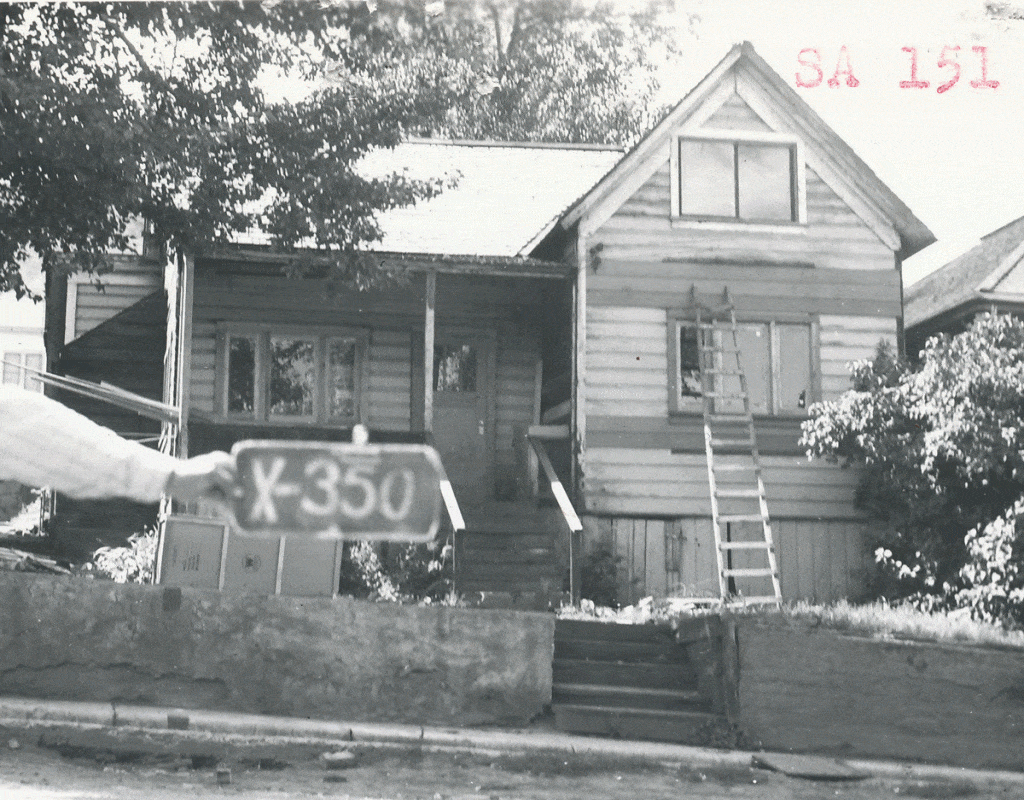As you may have read in this column last time, William Neil and his mother Ellen moved into the house at 920 Norfolk Avenue in 1927. In the years prior to the move, however, the entire Neil family, made up of James and Ellen Neil and nine of their ten children, had been living just a few houses away, at 915 Norfolk.

Credit: Park City Historical Society and Museum, Tax Photo Collection
When the United States joined the First World War in April 1917, hundreds of young men throughout Summit County enlisted in the armed services. Three of the oldest Neil sons – William, twenty-eight, Norman, twenty-two, and Victor, twenty – answered the call.
Though William and Victor were both assigned infantry duty, Norman went a different route, that of army baker. Thanks to his experience with his mother’s business, the St. Louis Bakery on Main Street, Norman was a prime candidate for serving in the Bakery Corps. After training at Fort Kearney, he was stationed in France, assigned to the 351st Bakery Company, part of the Quartermaster Corps, or combat support service.
Baking in a war zone was not easy. According to the 1916 Manual for Army Bakers, baking units were in charge of providing over 1,000 pounds of bread per day to hungry troops on the front. Two shifts of men each worked eight hours straight, mixing, kneading, and baking seven batches of dough. Each batch produced 144 pounds of bread. At any given time, there needed to be four batches of dough in the mixing process, two rising, two rising in bread troughs, and one in the oven. In cycles about ninety minutes long, the baker-soldiers made their rounds from station to station, constantly overseeing the delicate process.
Additionally, bakers were trained for situations in which no equipment was available. They had to know how to improvise anything from carrying racks to ovens. The Army’s manual even outlined how to dig out earthen or open-trench ovens or hurriedly construct ovens out of barrels. No matter what, bread was shipped to the fields and trenches every twenty-four hours.
When Norman joined his baking unit in France to his happy surprise he found an instant friend in the form of a neighbor from back home, Clarence Wright. Clarence later wrote to his mother, “I wish you could have seen Norman the first day he laid his eyes on me in this country. He sure was a happy boy. You nor Mrs. Neil need not worry about us.” Though both were surely happy to be working together, “the word work don’t express the hard labor we are doing,” Clarence said. The baking tents were hot, crowded, and swimming in ankle-deep mud.
After the war, Norman returned to Park City, rejoining his family in the two-story cross-wing style home at 915 Norfolk Avenue. To hear more stories and to see this and other houses in the neighborhood, join the Park City Museum for our annual Historic Home Tour, this Saturday, June 24 from 10am to 3pm. Visit our website at parkcityhistory.org or call for more information, 435-649-7457.